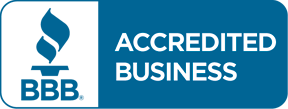As CPAP technology advances, CPAP manufacturers are developing more effective and efficient cleaning devices for CPAP accessories. After all, unclean CPAP equipment can lead to a variety of potential risks associated with exposure to bacteria, viruses and mold.
Many modern CPAP cleaning machines use either ozone gas or ultraviolet light to clean, disinfect and sanitize CPAP devices or accessories, such as masks, tubing and headgear. What is the difference between an ozone CPAP cleaner and a UV CPAP cleaner? Let’s take a look at some of the pros and cons of ozone versus UV CPAP cleaners!
Ozone CPAP Cleaners
Fast, Powerful Oxidizer
Ozone is a strong gas that can be used to kill harmful bacteria. Ozone is a more powerful oxidizer than ultraviolet, providing a faster reaction. Although UV CPAP cleaners require more contact time to clean, there is no delay in using your products. Ozone CPAP cleaners require over an hour of product downtime before use.
Possible Ozone Leakage
The FDA explains that in order for ozone to be effective in killing bacteria, it must be present at a high concentration that is unsafe for humans. Although ozone CPAP cleaners claim that they are designed to keep ozone gas inside the machine and its accessories, it is possible for a leakage to occur at tubing connections, filters or through the container. When leaks occur, ozone gas may be released into the room at unsafe levels, especially if the room is small or not well ventilated.
Health Risks
An FDA press release noted that they received 11 reports from patients experiencing coughing, difficulty breathing, nasal irritation, headaches, asthma attacks and other breathing complaints when ozone gas-based products were used to clean their CPAP devices. Exposure to high levels of ozone gas can worsen a patients’ existing chronic respiratory symptoms or stimulate decreased lung function.
UV CPAP Cleaners
Exposure Concerns
UV light is a powerful sanitizer that is only effective on the surface that it touches, meaning any shadows might impede the effectiveness of the UV light cleaning process. If the UV light fails to penetrate all components of CPAP devices and accessories or if they aren’t processed for a sufficient amount of time, some pieces may be left insanitized. This would lead to health, safety and performance issues.
Overexposure to UV light may cause injury, depending its wavelength, intensity and exposure time. Fortunately, most UV CPAP cleaners avoid direct exposure to UV light. However, the FDA does not have evidence that machines using UV light protect you from unsafe levels of UV radiation exposure.
Eco-friendly
Ultraviolet sterilization is an eco-friendly, non-toxic way to effectively eliminate bacteria and other microorganisms. Since the mid-20th century, hospitals, labs, schools, food processing plants and other crowded spaces have been using UV light disinfection.
Low Maintenance
Compared to ozone CPAP cleaners, UV cleaners require very little maintenance. Many ozone CPAP cleaners have a recommended filter replacement of 2 times per year, costing users an extra maintenance fee.
Low Cost
UV CPAP cleaners are typically much more cost-effective than ozone CPAP cleaners. Budget plays a large role in choosing a CPAP cleaning machine!
No Product Use Downtime
Although ozone CPAP cleaners work faster, they require over an hour of downtime before your products can be used. Once the cleaning process is complete in a UV CPAP cleaner, your products are immediately ready for use!

